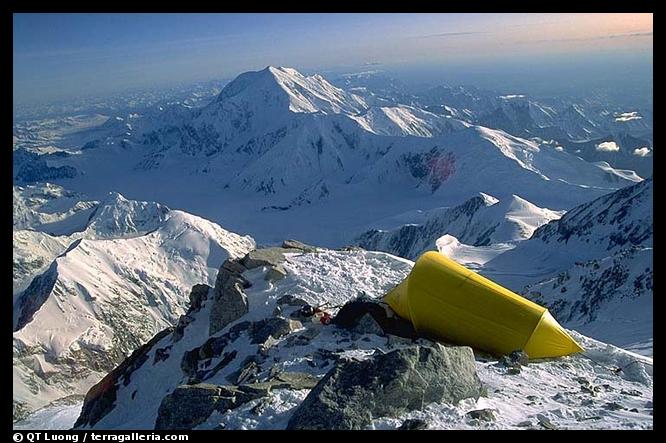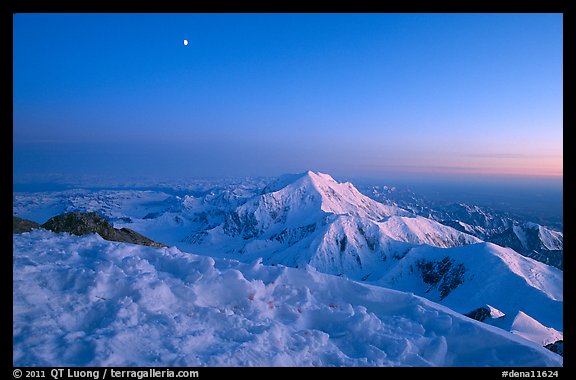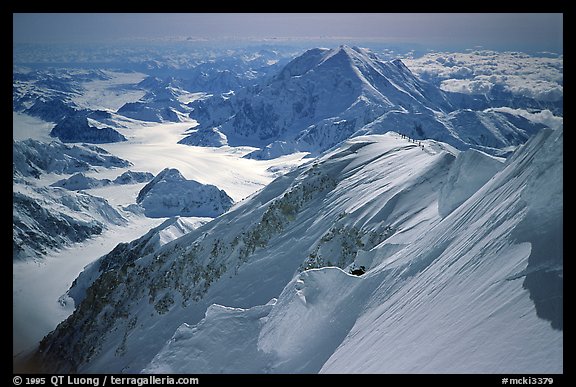Picturing the Top of North America
No Comments
The huge cliffs of Yosemite are what brought me to California, however, compared to the more northern, and therefore more glaciated Alps, the California mountains didn’t seem that big nor impressive. In the spring of 1993, a few months after arriving in California, I therefore set my sights on Mt McKinley – the official name for Denali at that time.
The top of North America amply deserves its nickname “the Big One”. Although the mountain, 20,308 feet high, is much lower than the Himalayan giants, its vertical relief of 18,000 feet from base to summit is larger. Because of its latitude, just a few hundreds miles below the Arctic Circle, it is one of the coldest mountains on earth. Climbing Mount McKinley combines the challenges of a high-altitude climb with those of a polar expedition. Each year, about a thousand climbers try for the summit, the vast majority of them through the West Buttress route. About half of them succeed.

A bush pilot dropped me at the base camp on the Kahiltna Glacier (elevation 7,200 feet) with 100 pounds of gear and supplies, good enough for three weeks. Climbing solo, ten days later, I reach 15,900 feet on the West Rib. However, increasing winds and approaching clouds below prompt me to retreat down to the West Buttress main camp at 14,400 feet where I wait out a storm in my tent. Two weeks after my starting, at last I set up my final camp before the summit, on a tiny ledge protruding from the steep slopes of the West Rib.

Before going to sleep to rest for what promised to be a long summit day, I could not help but open the tent’s door to take in the scenery. Viewed from 18,500 feet, the immensity of the glaciers extending to the horizon below overwhelmed me. I had never before experienced landscapes at that scale. Adding to the beauty of the pristine landscape, the twilight at those northern latitudes and time of year, lasted for hours. All the efforts made to arrive at this position felt worthwhile, and I resolved to keep exploring North America. Because the temperatures were in the negative double digits (F), I sat inside the tent, and just poked my upper body out. I attached the camera to an ice-ax that doubled as my monopod, and made a few exposures. Only a few weeks later, after I had come home and gotten my film back from the lab, did I realize what the photograph could have been on this truly once-in-a lifetime evening, had I stepped outside for a better foreground.

The next day, as I rewinded the roll of film in my Nikon FM2, it snapped, having become brittle because of the extreme cold. If I opened the back of the camera to install a new roll, light would fog the exposed roll. Since I did not want to lose any of the images, I resolved to use only my backup camera – a point and shoot Yashica T4 carried in my bib’s pocket – for the rest of the expedition. In my elation to reach the top, it didn’t matter that I had to photograph the summit ridge of Denali with that modest camera. In some ways, I have not gone down that mountain since.


